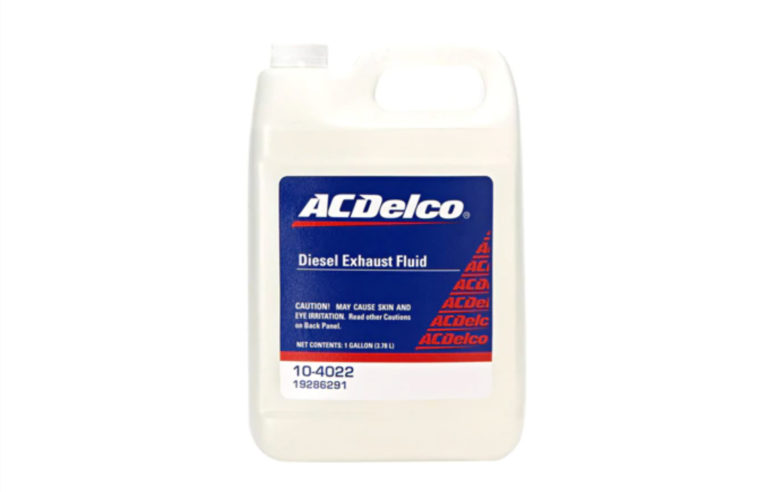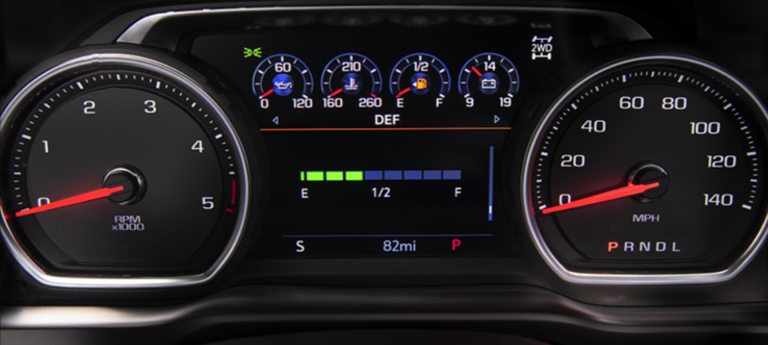
2020 Chevrolet Colorado, Express and Silverado 1500/2500HD/3500HD/4500HD/5500HD/6500HD models and GMC Canyon, Savana and Sierra 1500/2500HD/3500HD models equipped with one of the following diesel engines: L5D (Chevrolet only), LWN, LM2 or L5P
Some customers might express concern that their vehicle is using more Diesel Exhaust Fluid (DEF) than normal. After inspecting the vehicle, technicians may find no codes set and no messages on the DIC.
Diesel Exhaust Fluid (DEF) helps reduce Nitrogen Oxide (NOx) levels within the vehicle’s Selective Catalyst Reduction stage of the exhaust aftertreatment system. When the DEF level falls below a
calibrated value, a series of prompts and warnings will occur to alert the driver.

Diesel Exhaust Fluid (DEF) helps reduce the amount of regulated emissions that are produced.
SEGMENTED DEF LEVEL GAUGE
2020 Silverado and Sierra models equipped with LM2 or L5P diesel engines employ a new electronic DEF level gauge on the instrument cluster that indicates how much DEF remains in the tank. The gauge does not operate like a typical float-style fuel gauge, however. Instead, it relies on the Engine Control Module (ECM) to monitor both the DEF level sensor and fluid consumption rates to calculate an estimated range.
There may be some fluctuation in the amount of DEF represented on the gauge. After filling the tank, it may take a few key cycles to register the correct amount of fluid remaining. With the new segmented DEF level gauge, it is possible that after adding DEF, the gauge may read as full. However, if the actual level of DEF is just entering the last segment on the gauge, the reading is likely to drop by one segment when driving shortly after the fill event. As a result, drivers could have an initial impression that the vehicle consumes an excessive amount of DEF.

A new electronic DEF gauge on 2020 Silverado and Sierra models estimates how much fluid remains in the tank.
LOAD VERSUS MILES DRIVEN
The amount of DEF consumed also is a function of how hard the engine is working, or engine
load. Consequently, it is more representative to compare DEF consumption to the amount of fuel
consumed (also a function of engine load) instead of miles traveled. Other factors can affect DEF usage rates as well, such as humidity, ambient temperature and the altitude where the vehicle is
operating.
Under certain conditions, the ECM will either increase or decrease the amount of DEF used based
on learning or adaptive algorithms. For example, in the event of a malfunction and a Check Engine light, the ECM may double or even eliminate the amount of DEF that is consumed. As a result, a modified amount of DEF usage will continue until the vehicle is repaired and the learned value in the ECM is reset.

